
Invertebrates Around Las Vegas, Wildlife Around Las Vegas
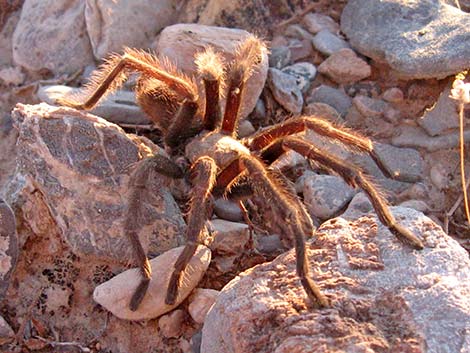 |
General: Desert Tarantulas (Aphonopelma iodius; Family Theraphasidae) are large, interesting spiders that are common in the desert around Las Vegas. They eat insects, other spiders, small lizards, and probably anything else they can catch. Like all spiders, tarantulas have fangs and venom. However, they are generally harmless to humans (said to be similar to a bee sting). I find that many tarantulas are docile and will crawl onto your hand and up your arm. Sometimes, however, they are high-strung and bare their fangs at the first contact with a human hand. Whatever you do, don't try to grab and pick them up, as they are quicker than they look and will vigorously defend themselves. Females are uniformly tan in color. Male have black legs, a brownish body (cephalothorax) with a dark triangle around the eyes, and a reddish abdomen. Males also have hooks on their front legs that they use to hold the fangs of a female during mating. Holding her fangs apparently helps ensure that he doesn't end up as dinner. Both sexes are covered with hairs. |
 |
Male Desert Tarantulas live to an age of about 3 years. At that age, they are mature and set out on their primal quest walking across the desert in search of a female during the fall "migration." Males usually die during or after their quest. If predators like Tarantula Hawks or coyotes don't get him, the female may. In contrast, females are more sedentary and wait in their burrows a suitable male to arrive. Females can live for about 20 years. Tarantulas mostly eat larger insects (e.g., tasty desert cockroaches or crickets), but also eat other bugs and even small lizards. They kill the prey item by injecting venom with a bite from their quarter-inch-long fangs. Enzymes in the venom dissolve the soft tissues inside the victim, allowing the tarantula to suck it dry and leave an empty shell behind. As a defense mechanism, tarantulas may scrape hairs off their abdomen and toss them into the eyes and nose of the attacker. In the eyes or nose, the hairs are said to be quite irritating. |
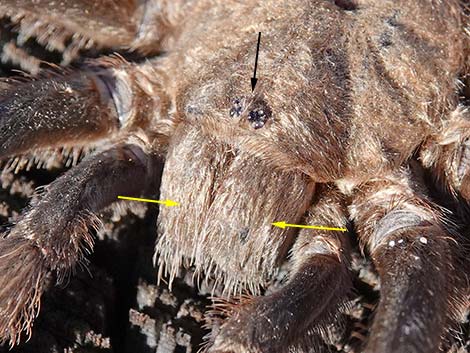 Eyes (black arrow) are located atop the body, and large pads (yellow arrows) cover the fangs |
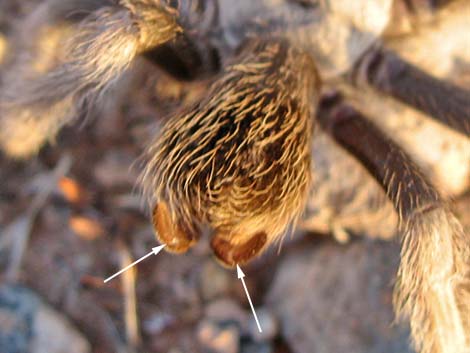 These look like stingers, but they are harmless spinners that produce spider webs |
 Males are tan with black legs and have hooks on their front legs used to hold apart the fangs of a female during mating |
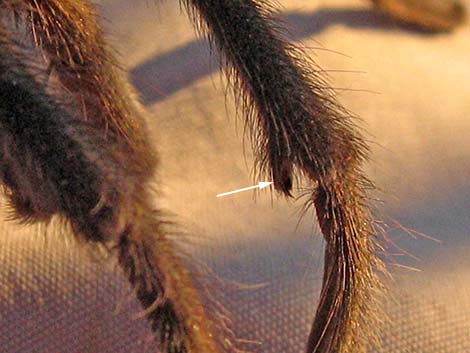 Fang hook (arrow) |
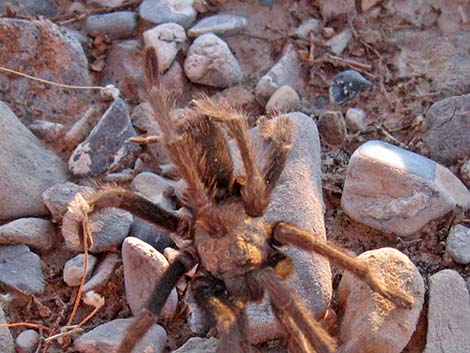 Tarantula scraping hairs off its abdomen to toss them into my eyes and nose |
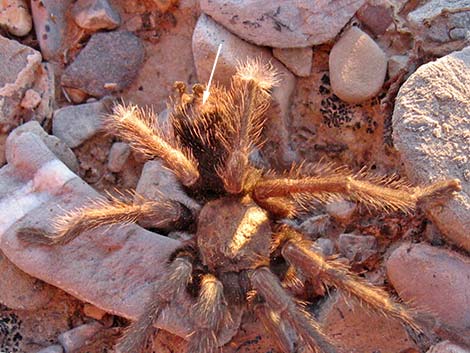 Notice the bare spot on the rump after this spider tried to irritate my eyes. |
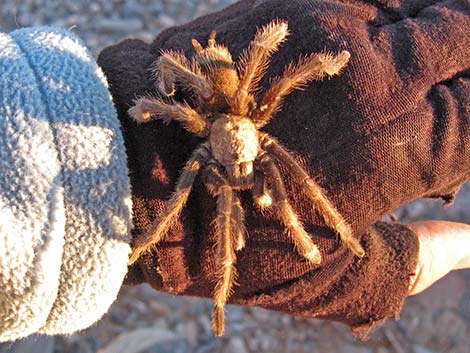 |
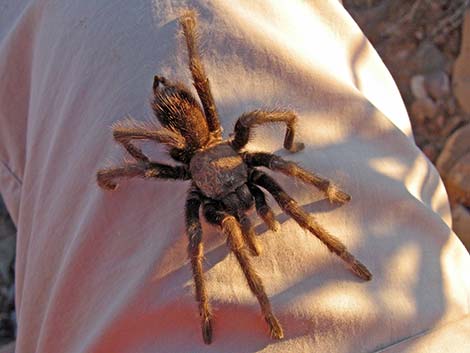 |
 |
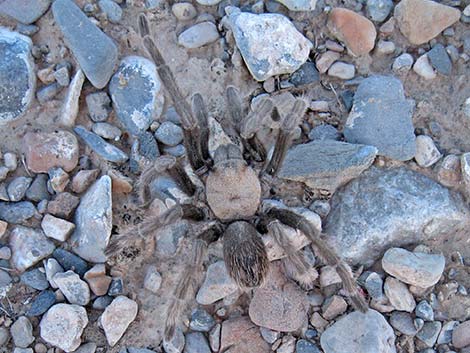 |
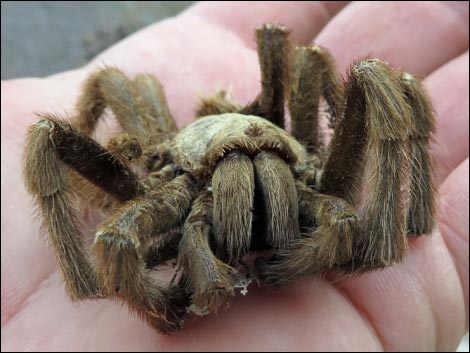 |
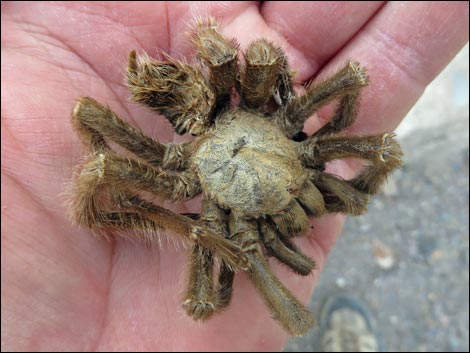 |
 Tarantula fangs |
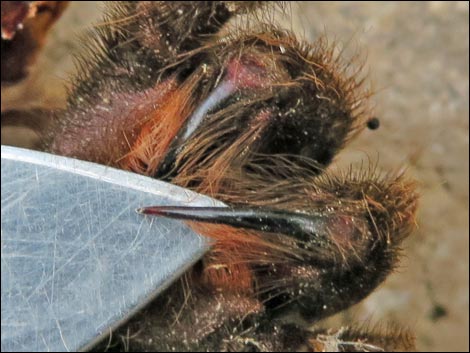 Tarantula fangs |
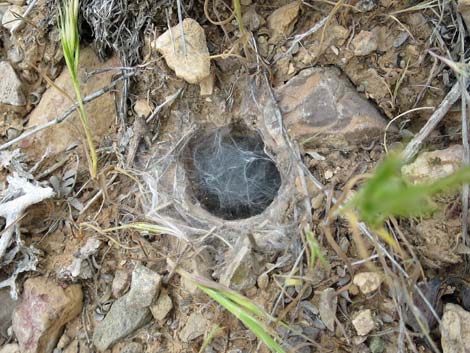 Desert Tarantula burro (somebody is home) |
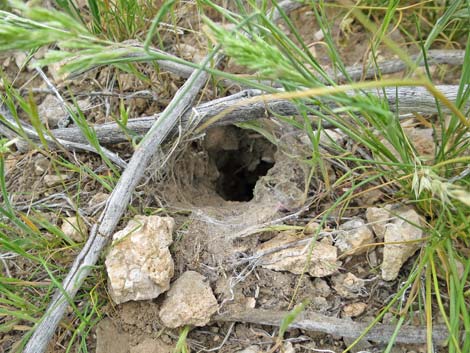 Desert Tarantula burro (somebody is away) |
Note: All distances, elevations, and other facts are approximate.
![]() ; Last updated 240201
; Last updated 240201
| Inverts Around Las Vegas | Wildlife Around Las Vegas | Glossary | Copyright, Conditions, Disclaimer | Home |